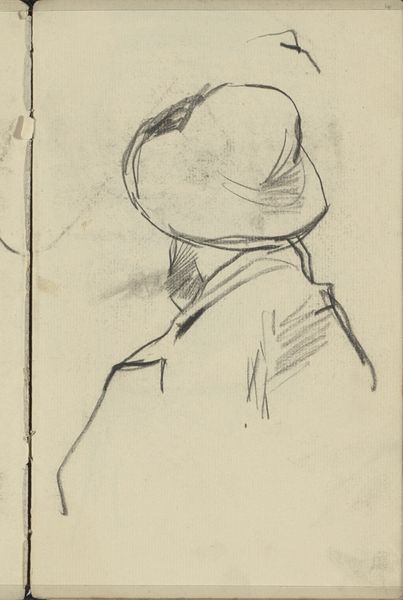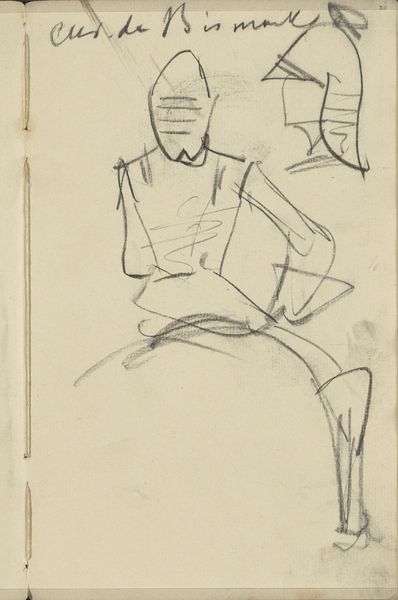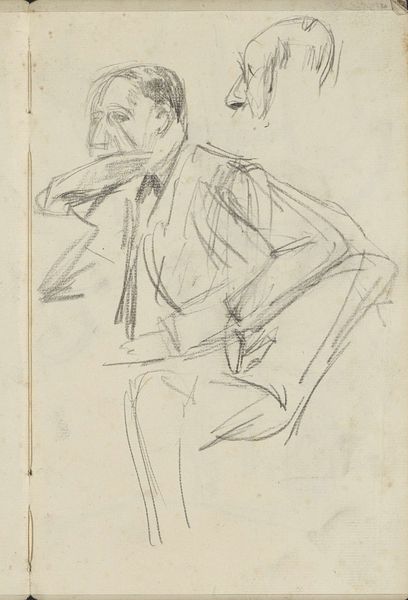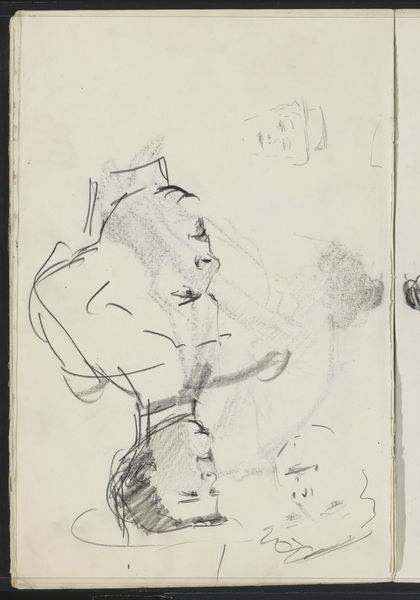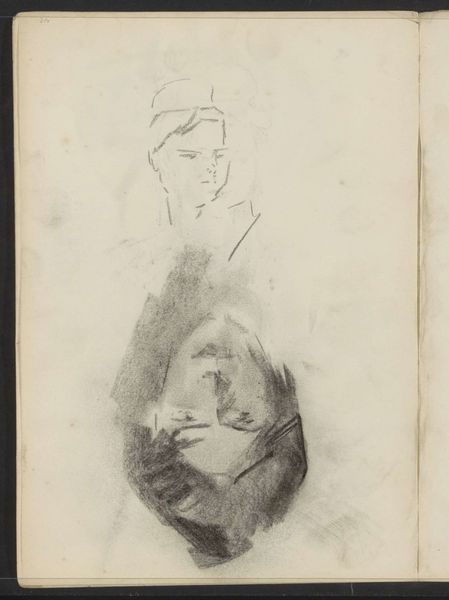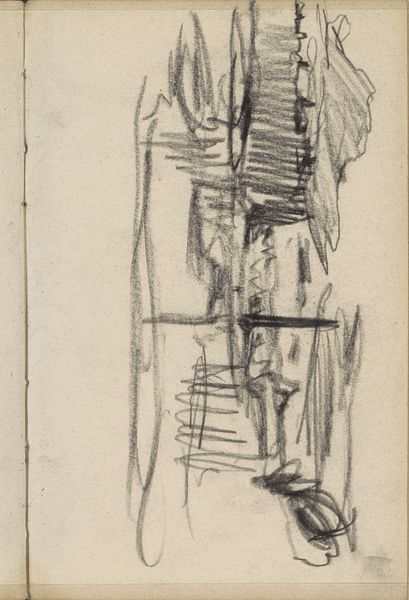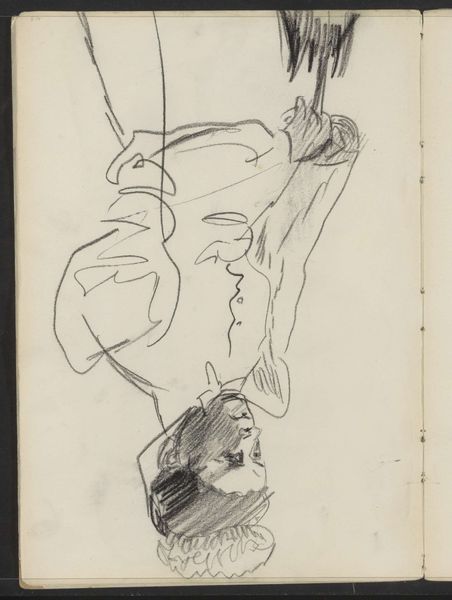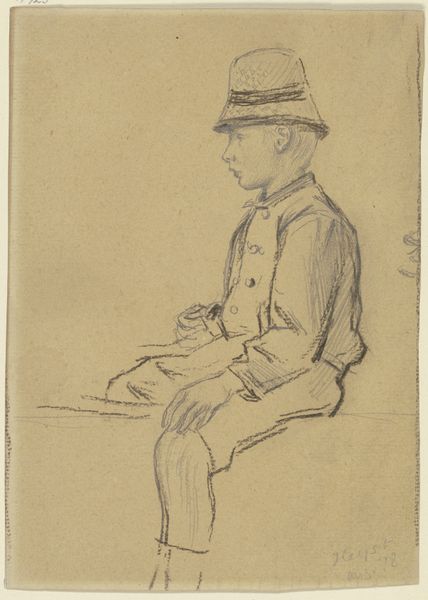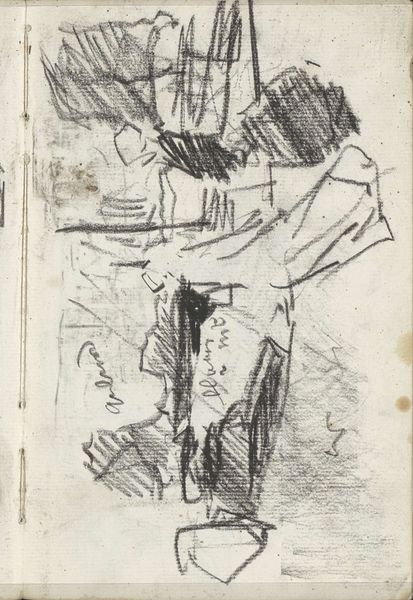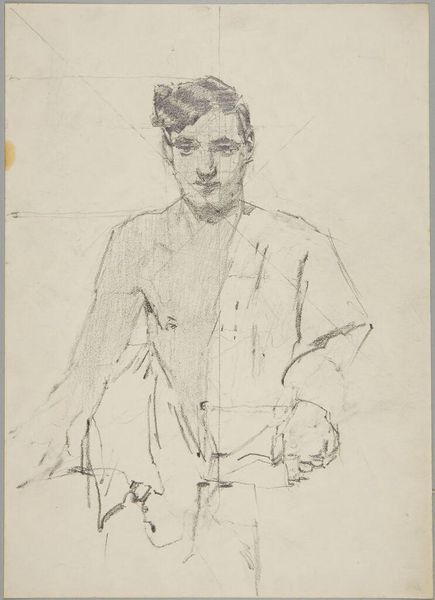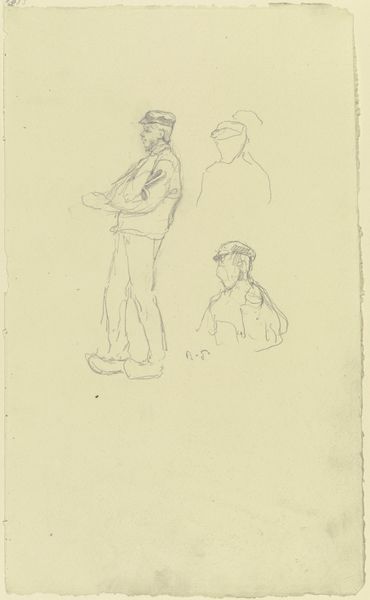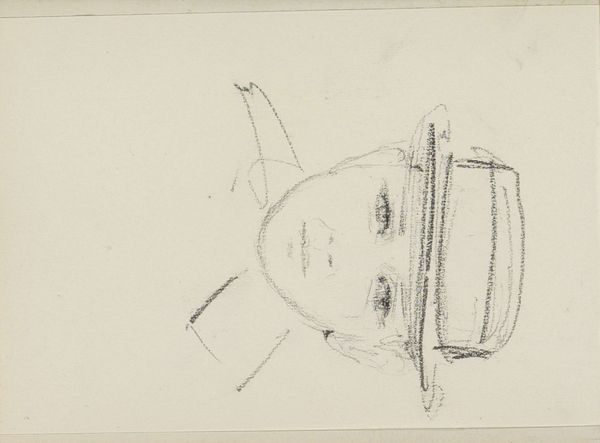
Copyright: Rijks Museum: Open Domain
Editor: Here we have Isaac Israels' "Man met pet," a pencil drawing likely from between 1886 and 1934. The sketch feels so immediate and casual. What do you see in this piece beyond a quick study? Curator: It is tempting to simply see it as a casual sketch, but let's consider the social context. Israels was painting and drawing the working class at the end of the 19th century. How might this portrayal of a man, perhaps a labourer, in a cap challenge or reinforce social hierarchies of the time? Editor: I see what you mean. The man's downward gaze and the sketch's unfinished quality… perhaps it reflects the marginalisation or lack of visibility afforded to the working class? Curator: Exactly. Israels came from privilege, and there is often a paternalistic air, perhaps an attempt to ennoble or make 'picturesque' the working class. But isn’t it more compelling than that? Consider the rapid strokes of the pencil – does this technique, a cornerstone of Impressionism, also convey something about the fast-changing world he observed? The dynamism of modern life as it was being lived by ordinary people? Editor: That's an interesting point; it shows the subject's movement and perhaps the impermanence of his position within society. The sketch becomes a historical document. Curator: And within art history, Israels' work contributes to a broader narrative of representing social change, echoing movements in literature and theatre, though often from a male perspective. Does it spark ideas about the people who aren’t depicted? Who remains invisible even within these ‘progressive’ artistic circles? Editor: Thinking about that opens a completely different view into understanding Israels’ position, and the many nuances of his work within his cultural milieu. Curator: Exactly, these 'simple' sketches reveal the complex interactions of artist, subject, and society.
Comments
No comments
Be the first to comment and join the conversation on the ultimate creative platform.
